Last year, or maybe even the year before, R. planted a swan plant in her herb garden in the hope of attracting some Monarch Butterflies (Danaus plexippus). Which of course it did, and regular culling was required to make sure it grew unmolested for a full year so that it would be strong enough to support a population of caterpillars and still survive.
This summer we have four caterpillars on it.
Yesterday, we noticed two of them hanging from their tails, clearly ready to go into their chrysalises. At some point during a couple hours of us not looking, one of them did, and I was completely mystified as to how they did it. The shell of the chrysalis looked to shiny to have been spun, and in any case it happened too quickly for that.
So how do they go from this:
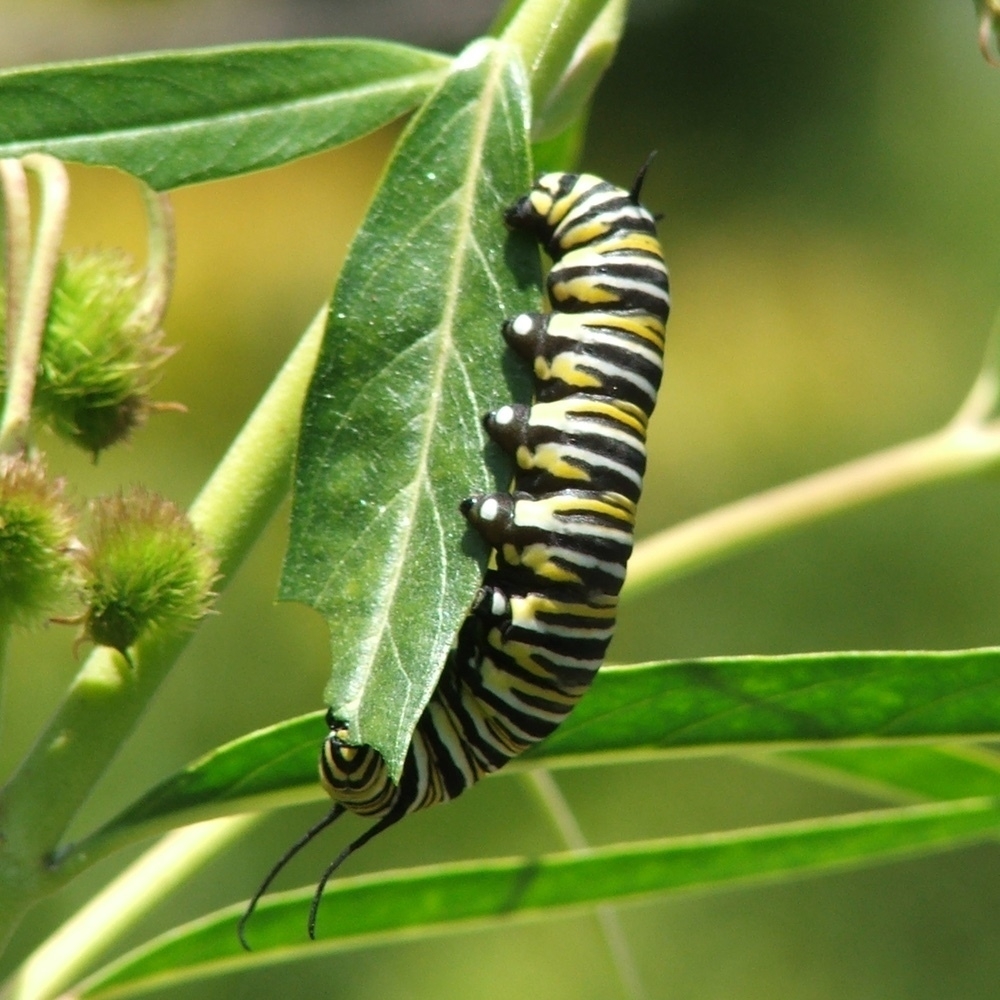
To this:
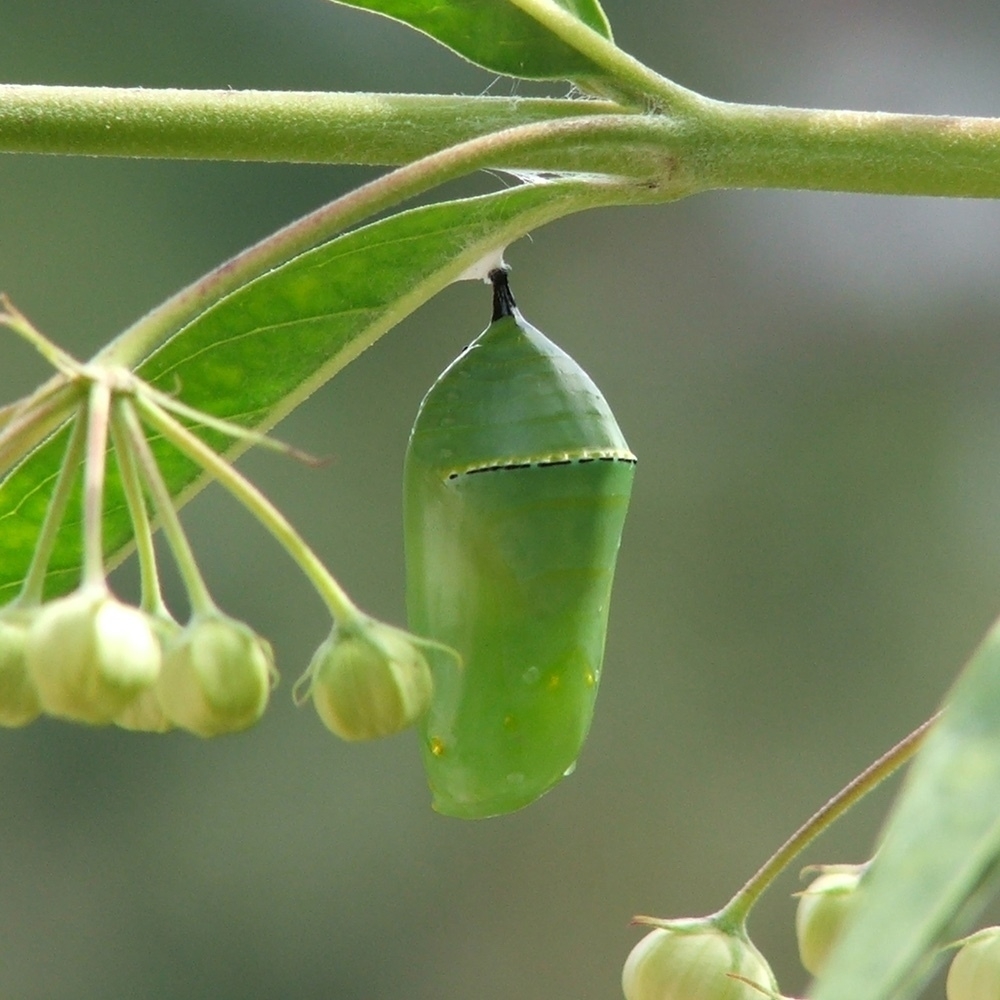
…in just a matter of minutes?
The girls and I found out this morning.
Just after 11am, I looked out the window and saw that the remaining caterpillar hanging by its tail was wriggling quite vigourously. Given that it had been practically still for nearly two days, something was up. I grabbed the camera and called the girls, and we piled outside to have a look.
By the time we got there, we could see what was going to happen next.
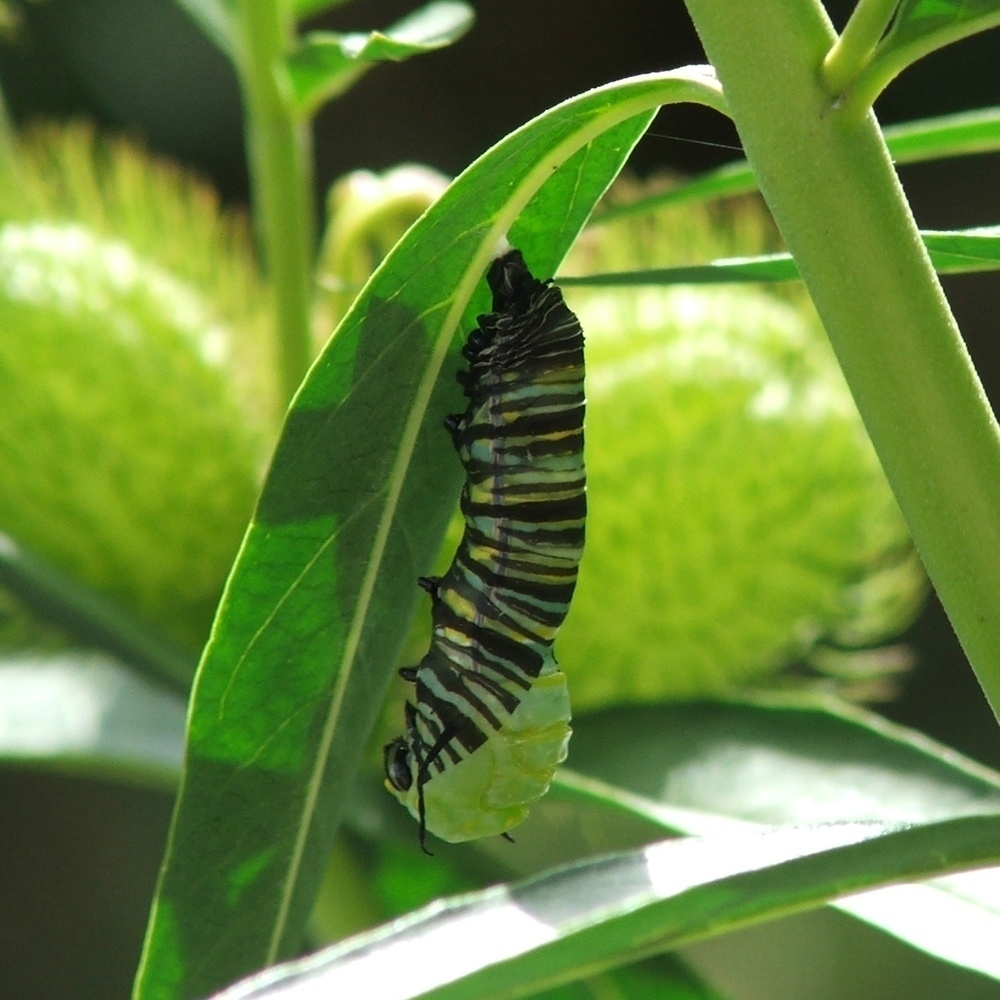
Those two days of stillness must have been to organise the new skin underneath the old, and now the caterpillar was splitting out of its old skin, green chrysalis skin underneath.
Twenty seconds later:
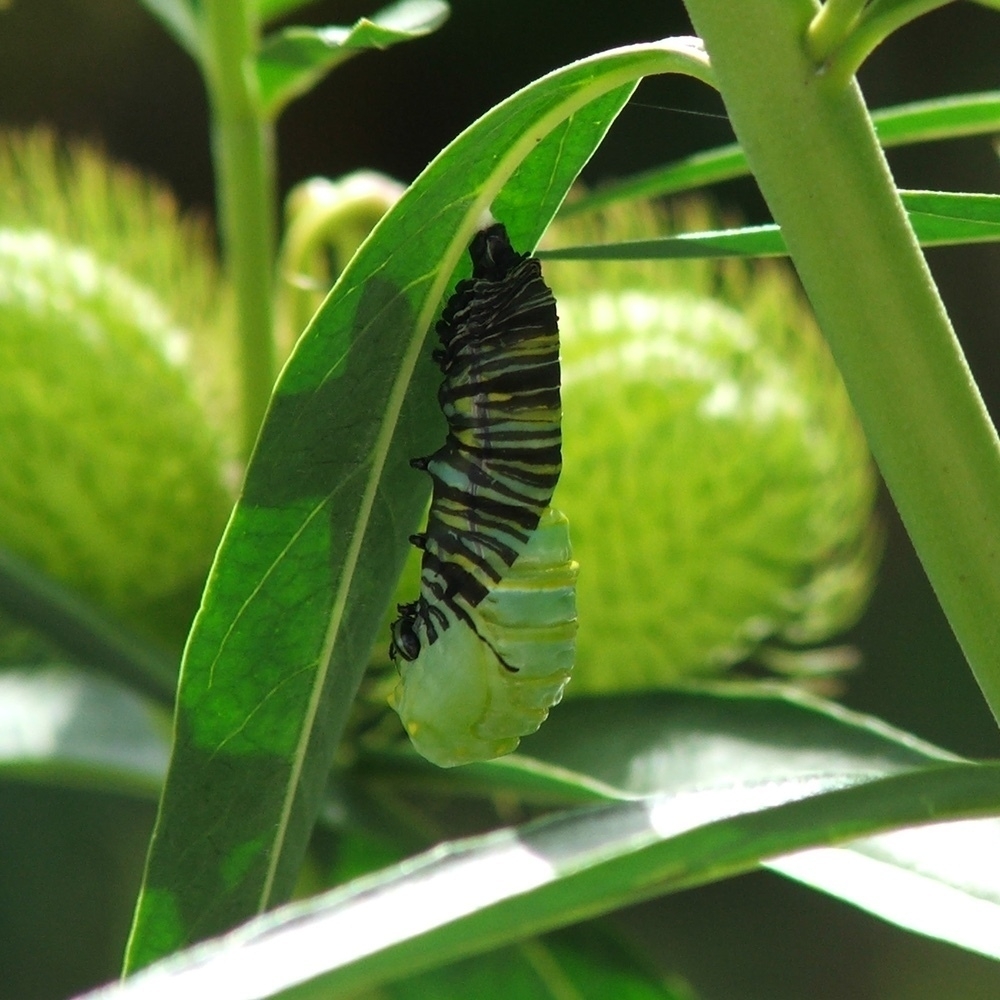
Another two minutes… (I was having trouble focussing the camera: between the wind making the plant sway, the girls clambering over me, and the camera having the world’s crappiest macro function - and clumsiest manual focus method - I couldn’t get anything in focus. I had to pull back and skip using the zoom + macro.)
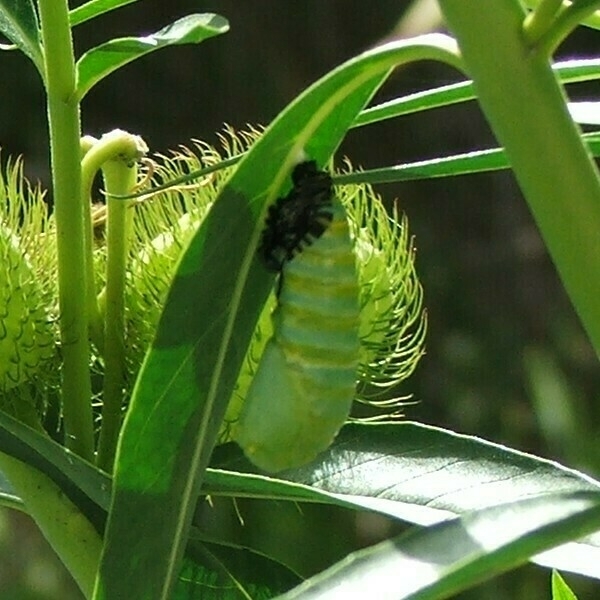
Shortly after this, it dropped the old skin. The chrysalis was now complete:
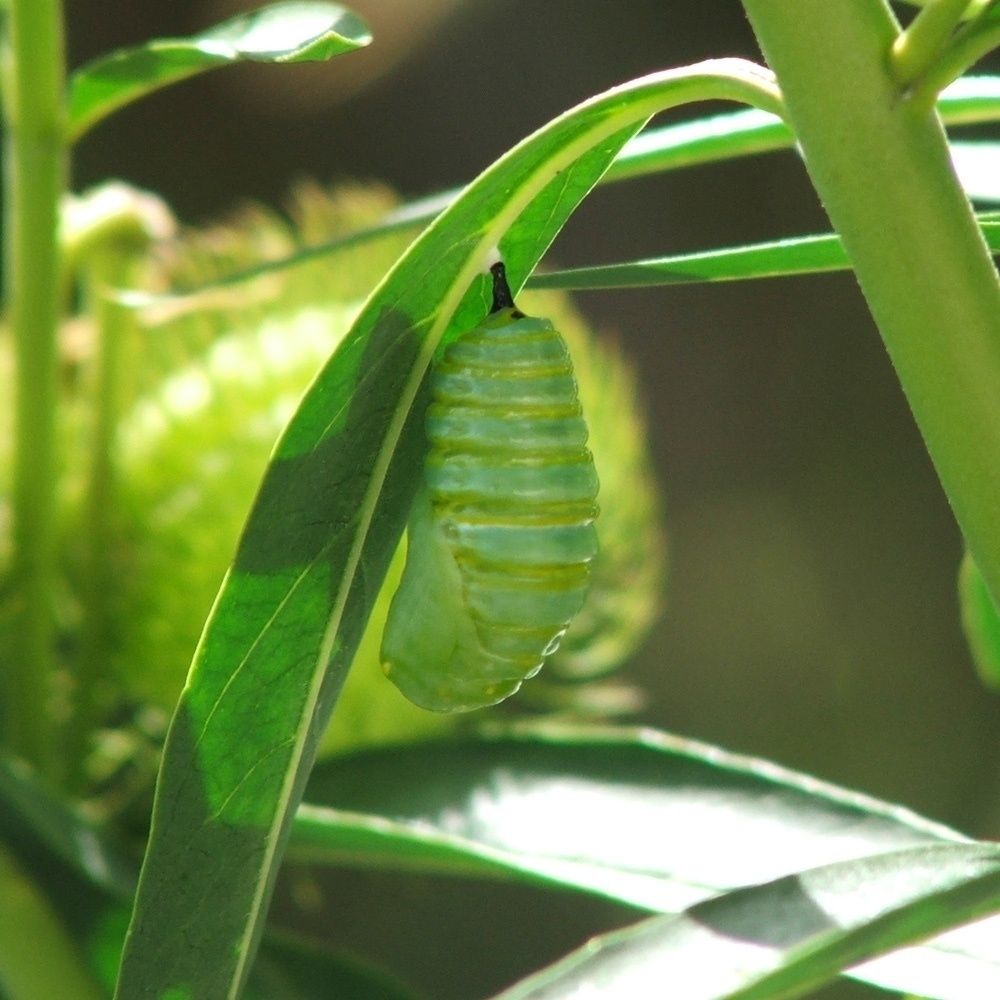
The interesting thing here was how little it looked like the finished article: where was the elegant shape, and the little gold spots and highlights?
We had another look half an hour later, and the shape had changed quite a bit, becoming a lot more recognisable as a Monarch chrysalis:
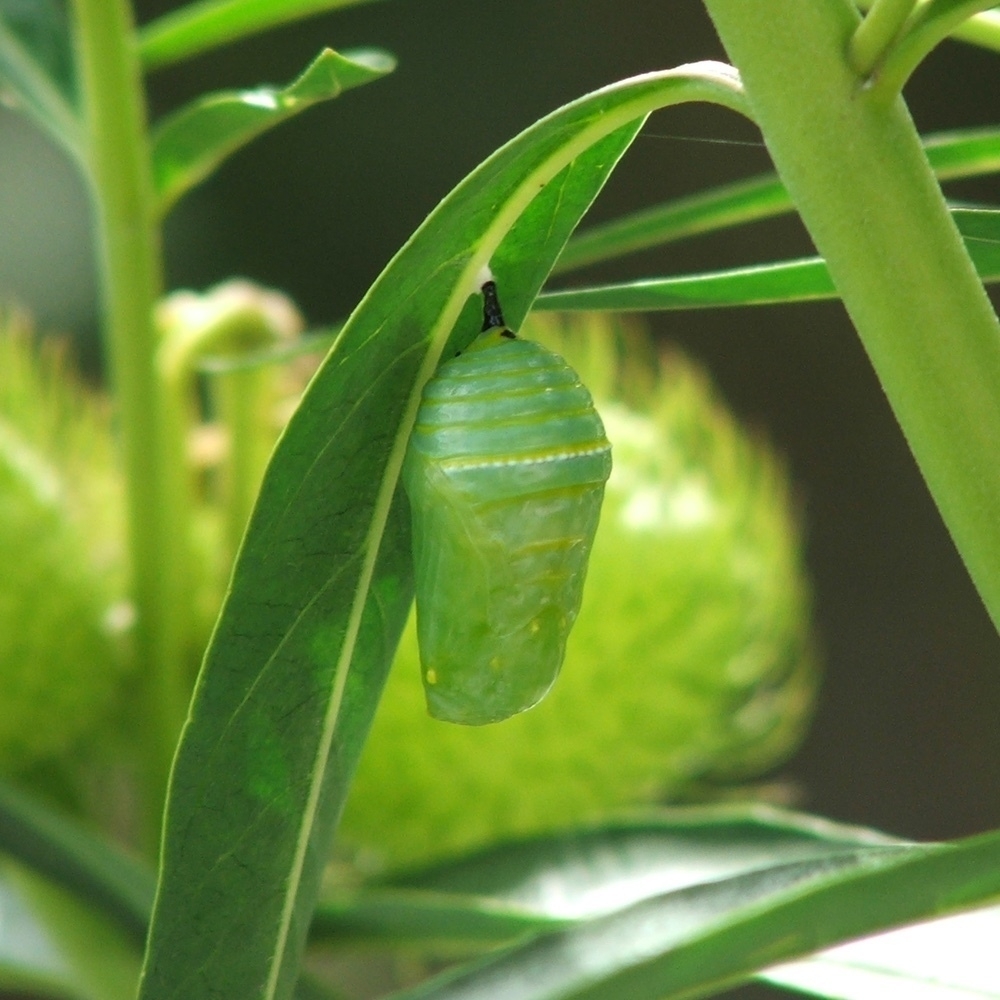
A couple hours later, and it looked just like its older sibling from yesterday:
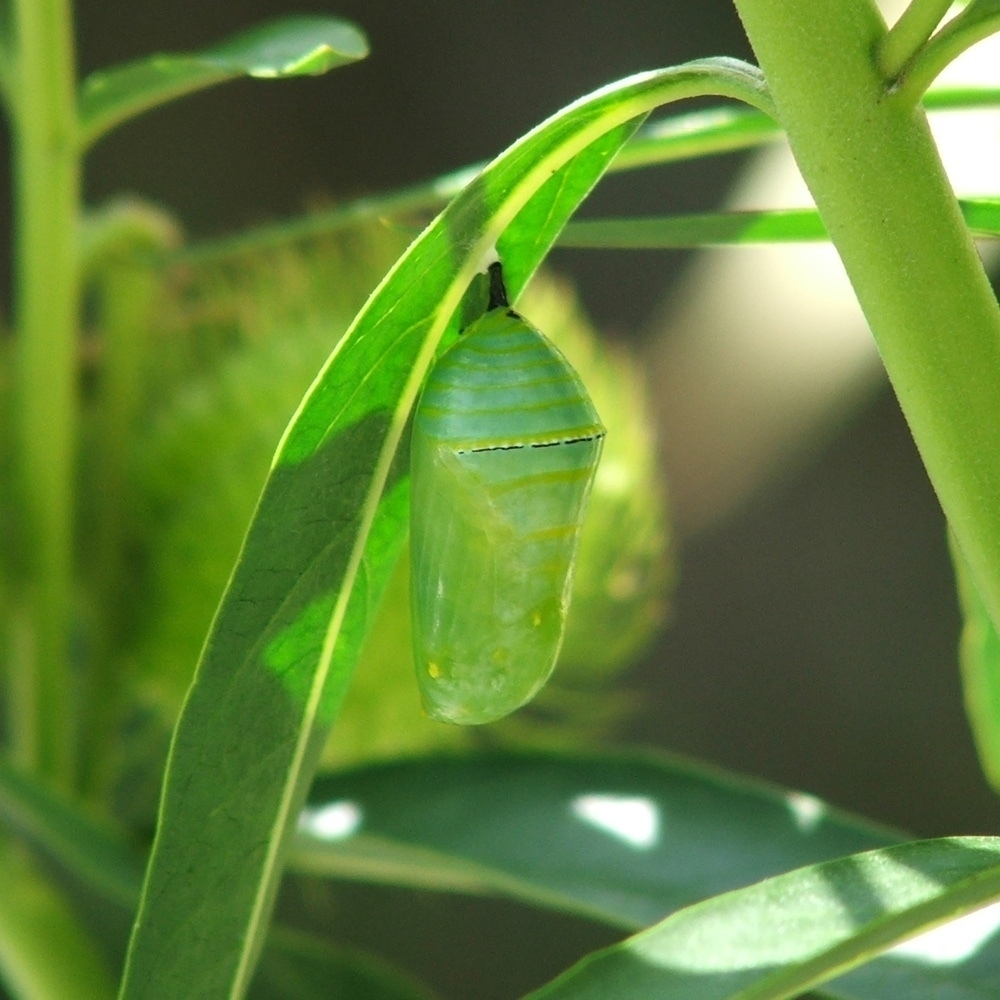
I’m going to have to do some research now and find out how long it will pupate (10 - 14 days, apparently), so that we can have a chance of catching it emerge as a butterfly…